Cyclone Phailin: Mass evacuations in eastern India
- Published
The BBC's Sanjoy Majumder: "The intensity of the winds has become stronger"
As many as 500,000 people in India have been evacuated as a massive cyclone sweeps through the Bay of Bengal towards the east coast.
Cyclone Phailin, categorised as "very severe" by weather forecasters, is expected to hit Orissa and Andhra Pradesh states on Saturday evening.
The Meteorological Department has predicted the storm will bring winds of up to 220km/h (136mph).
A super-cyclone in 1999 killed more than 10,000 people in Orissa.
But officials say this time they are better prepared, the BBC's Sanjoy Majumder in Orissa reports.
The Meteorological Department said Cyclone Phailin was due to make landfall late on Saturday evening, Indian time. The centre of the storm was expected to hit the coast around the town of Gopalpur, external.
Homes at risk
Officials said Cyclone Phailin would bring a storm surge of at least 3m (10ft) that was likely to cause "extensive damage" to mud houses on the coast.
"No-one will be allowed to stay in mud and thatched houses in the coastal areas,'' said Orissa's Disaster Management Minister Surya Narayan Patra.
The army is on standby in the two states for emergency and relief operations. Officials said helicopters and food packages were ready to be dropped in the storm-affected areas.
Meanwhile, the US Navy's Joint Typhoon Warning Centre predicted that Phailin could produce gusts of up to 296km/h (184 mph), while the London-based Tropical Storm Risk classified Phailin as a Category Five storm - the most powerful.
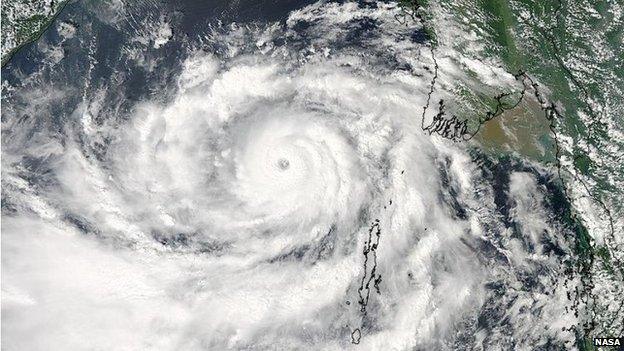
Cyclone Phailin is expected to be the biggest storm in the region for 14 years
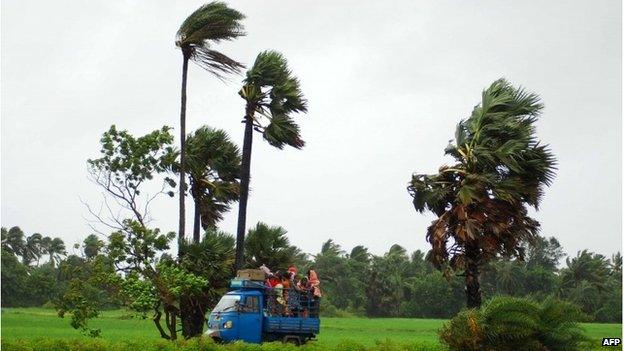
Locals have been shutting up businesses and taking cover as the cyclone approaches
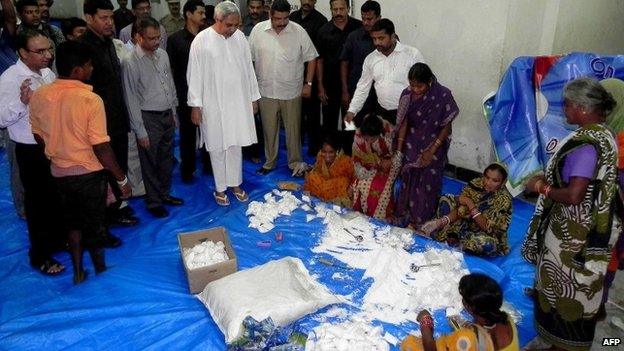
Relief operations are underway in Orissa to provide food and shelter for evacuees
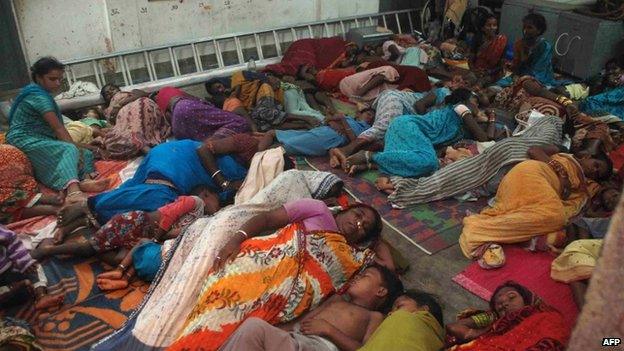
As many as 500,000 people have left their homes, many for storm shelters
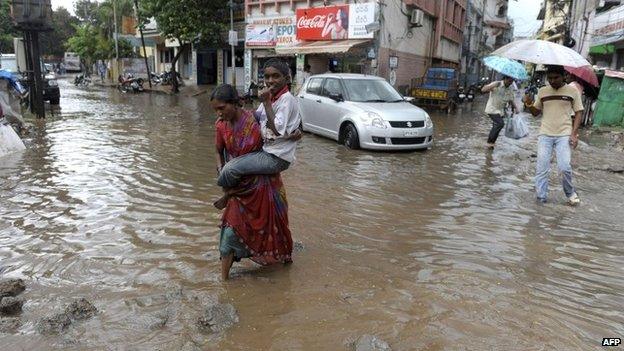
Parts of Orissa and Andhra Pradesh states have suffered heavy flooding in recent days
Fishermen have been asked not to venture out to sea.
Heavy rain and winds have already struck Orissa, where authorities have set up storm shelters for evacuees.
Janmejay Mohapatra, a resident of Orissa state capital Bhubaneswar, said it was too dangerous to go out now, as trees were down and debris was flying everywhere.
Phailin update
"Already the rain is very heavy and the wind is gusting at 100-120km an hour," he told the BBC. "The phone lines are down where I am and we have no electricity."
Minister Surya Narayan Patra said:"We are fighting against nature. We are better prepared this time, we learnt a lot from 1999."
India's eastern coast and Bangladesh are routinely hit by cyclonic storms between April and November which cause deaths and widespread damage to property.
In December 2011, Cyclone Thane hit the southern state of Tamil Nadu, killing dozens of people.

- Published2 November 2012
- Published31 December 2011